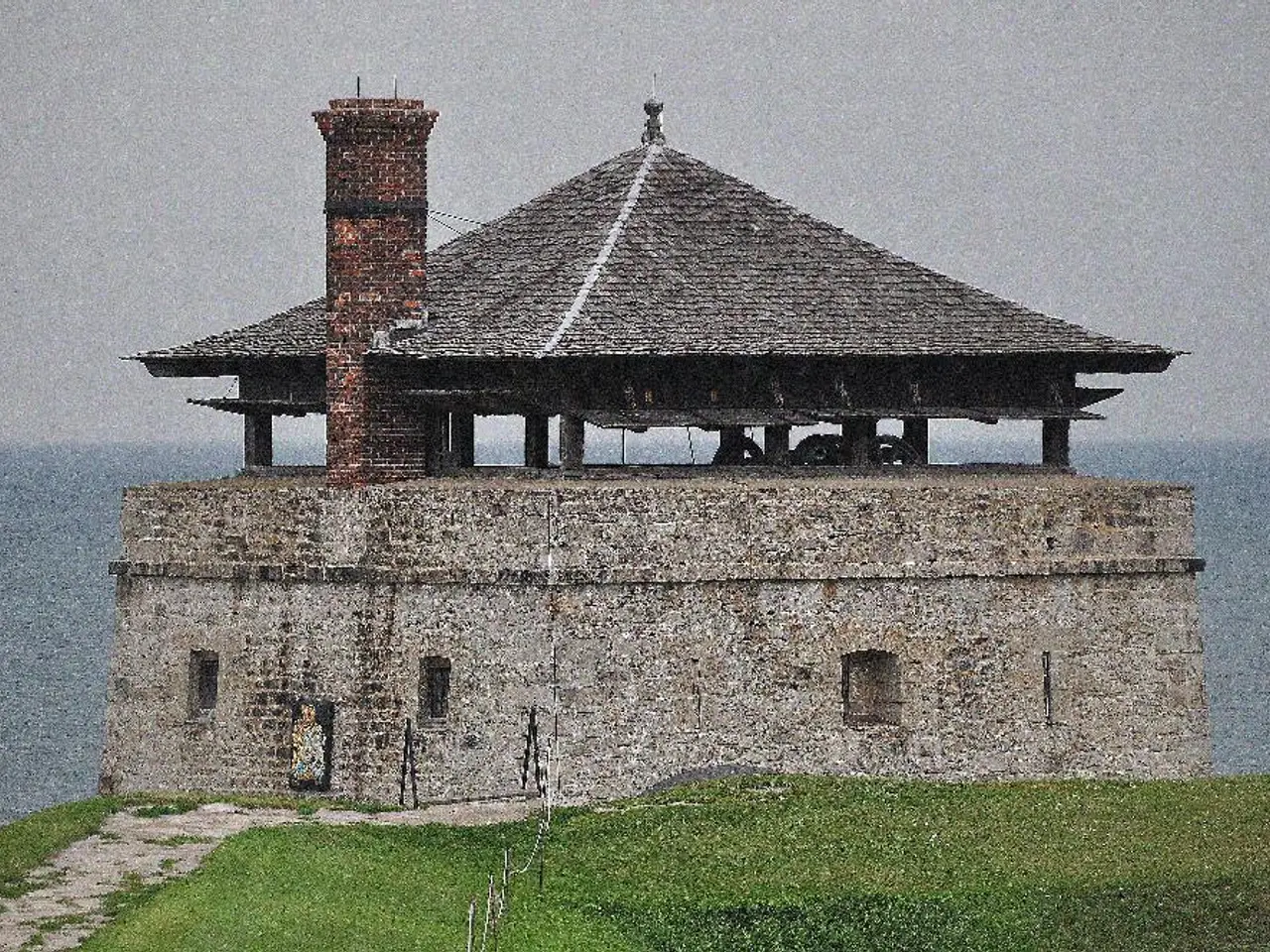Approval granted for Kirsty Young's residence on a secluded Scottish island, home to free-roaming wallabies.
Inchconnachan Island, affectionately known as "Wallaby Island," is set to welcome a new development that promises to respect its ecological importance while creating a unique, sustainable space. Kirsty Young and Nick Jones have secured planning approval for a luxury eco-retreat on the island, with a focus on minimizing environmental impact and promoting biodiversity.
The project includes a three-bedroom lodge, a plants room, stores, and infrastructure for an on-site warden. Heating for the lodge will be provided by a ground source heat pump using boreholes beneath the lodge. Electricity will reach the island via a Lochbed cable from the mainland.
Water will be sourced from an on-site borehole, filtered, and stored in tanks. A Klargester Biodisc treatment plant will handle wastewater. The plans also include connecting boardwalks, updated jetties, and the removal of invasive species for the natural regeneration of the site.
The island's native woodland habitats have been deemed "unfavourable declining" by conservation authorities. Invasive species like rhododendrons have put Inchconnachan's ecosystems under strain. The project aims to address these issues by implementing comprehensive conservation efforts, including hiring a full-time island warden for the conservation efforts and waste management.
The wallabies on Inchconnachan Island, a unique colony that coexists today alongside otters and other native species, will be closely monitored to assess their impact on native flora. Environmental organisations, including the Woodland Trust, have objected to the plans, fearing damage to native habitats. However, the park authority concluded that the plans, when paired with a rigorous island management plan, would result in net benefits for biodiversity.
The couple acquired the 103-acre island in 2020 for over £500,000. Inchconnachan was once the holiday retreat of the Colquhoun family of Luss and later became famous for its colony of wild wallabies. The project's goal is to revitalize the island responsibly, incorporating several specific sustainable measures both in its construction and operation.
These measures align with typical commitments for eco-retreats in sensitive natural locations. Key initiatives typically include using eco-friendly building materials, low-impact construction techniques, renewable energy sources, water conservation and management, waste reduction and recycling, biodiversity protection, energy-efficient design, sustainable transport options, and community engagement and environmental education.
Inchconnachan Island is designated as a Special Area of Conservation (SAC) and part of Scotland's National Scenic Area. The lodge will be a low-impact design, using natural materials and raised walkways to minimize ground disturbance. For detailed specifics, the project’s environmental impact assessments or planning applications would provide more precise information.
- Kirsty Young and Nick Jones, the project planners, aim to build a unique luxury eco-retreat on Inchconnachan Island that minimizes environmental impact and promotes biodiversity.
- The project includes a three-bedroom lodge, a plants room, stores, and infrastructure for an on-site warden, with heating provided by a ground source heat pump.
- Electricity will be sourced via a Lochbed cable from the mainland, while water will come from an on-site borehole, filtered, and stored in tanks.
- The plans also include connecting boardwalks, updated jetties, and the removal of invasive species for the natural regeneration of the site.
- Inchconnachan's native woodland habitats are under strain due to invasive species like rhododendrons, but the project aims to address these issues by implementing comprehensive conservation efforts.
- The project's goal is to revitalize the island responsibly, incorporating sustainable measures such as eco-friendly building materials, renewable energy sources, and water conservation.
- The lodge will be a low-impact design, using natural materials and raised walkways to minimize ground disturbance, aligning with typical commitments for eco-retreats in sensitive natural locations.
- Inchconnachan Island, as a designated Special Area of Conservation (SAC) and part of Scotland's National Scenic Area, will require specific and detailed sustainability measures, as outlined in the project’s environmental impact assessments or planning applications.




